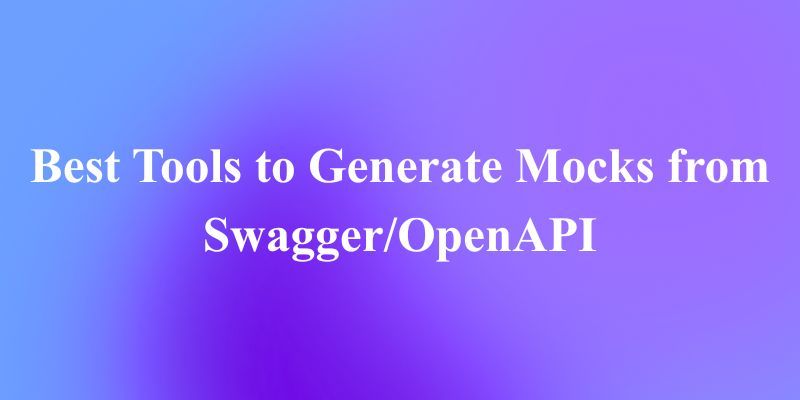When discussing about APIs (Application Programming Interfaces), efficiency and streamlined workflows are paramount for both developers and end users. One powerful technique that can significantly enhance API performance is request chaining. This approach involves strategically linking multiple API requests together, enabling the subsequent request to utilize the output from the preceding one.
With Apidog, your API development can be sped up and optimized due to the simple and intuitive user interface - do not second guess what an API does, so that you can accurately implement and chain API requests!
Click the button below to find out more about Apidog's functions and features! 👇

This article delves into the concept of request chaining, exploring its potential benefits and offering practical guidance on its implementation to optimize API interactions.
What is API Request Chaining?
API request chaining is a software development technique used to manage the complexity of interacting with multiple APIs. It involves making a series of programmatic API requests in a defined order, where the output from one request is used as input for the next. This creates a sequential workflow that accomplishes a complex task.
API Request Chaining Key Concepts
API request chaining, while conceptually straightforward, involves several intricate details for developers to consider. Here's a more detailed breakdown of the key concepts and essential aspects:
Dependency Management
Implicit vs. Explicit Dependencies: Dependencies can be implicit, where the order of calls dictates data flow (e.g., needing a user ID before retrieving their profile). Explicit dependencies involve defining clear relationships between requests, often using tools like API gateways or code libraries.
Error Handling and Cascading Failures: If a request in the chain fails, subsequent requests might fail as well due to missing data. Robust error handling strategies are crucial to identify and address failures gracefully, potentially retrying requests or providing informative error messages.
Data Extraction and Manipulation
Response Parsing: Techniques like JSON parsing (for JSON responses) or XML parsing (for XML responses) are used to extract relevant data from the response body. Tools like libraries or frameworks can simplify this process.
Data Transformation: Extracted data might need manipulation before being used in subsequent requests. This could involve filtering, formatting, or applying calculations.
Order of Execution and Asynchronous Processing
Synchronous vs. Asynchronous Calls: Chaining can involve synchronous calls where each response is received before making the next request. Alternatively, asynchronous processing allows parallel execution of some requests, improving performance for independent tasks.
Conditional Logic: Requests might be triggered conditionally based on specific data retrieved in previous responses. Conditional branching allows for more dynamic workflows.
State Management and Context
Preserving Context: When dealing with multiple requests, it's important to maintain context (e.g., user ID, session information) throughout the chain. Techniques like session variables or context objects can be employed.
State Management Libraries: Some libraries or frameworks offer built-in state management functionalities to simplify maintaining context across chained requests.
Security Considerations
Sensitive Data Exposure: When chaining requests involving sensitive data (e.g., access tokens), ensure proper security measures are in place. Data masking or encryption might be necessary in certain situations.
API Rate Limits: Be mindful of API rate limits imposed by the service providers. Chained requests can quickly reach those limits if not managed properly. Consider implementing throttling or exponential backoff strategies to avoid exceeding limits.
Understanding these key concepts equips developers to effectively utilize API request chaining for building complex and efficient workflows that interact with multiple APIs. By carefully managing dependencies, data flow, execution order, and security concerns, developers can leverage the power of chaining to create robust and well-structured applications.
Benefits of API Request Chaining
API request chaining offers a compelling approach for building applications that interact with multiple APIs. Here's a detailed breakdown of the key benefits it unlocks for developers:
Enhanced Efficiency and Reduced Development Time
Automated Data Flow: By chaining requests, the manual process of fetching data from one API and feeding it into another is eliminated. This automation streamlines workflows and reduces development time.
Reduced Code Complexity: Chaining simplifies complex workflows by breaking them down into smaller, more manageable API calls. This leads to cleaner and easier-to-maintain code.
Improved Error Handling: Chaining allows for centralized error handling within the chain itself. This reduces the need for repetitive error checks at each individual API call, improving code efficiency.
Streamlined User Experience and Performance
Reduced Roundtrips: Chaining minimizes the number of roundtrips (requests and responses) needed to complete a task. This can significantly improve application performance, especially for tasks involving multiple APIs.
Faster Data Retrieval: By strategically orchestrating requests, data retrieval can be optimized. This leads to a smoother user experience with faster response times.
Reduced User Interaction: In some cases, chaining can eliminate the need for users to make multiple API calls manually. This simplifies user interaction and improves the overall user experience.
Modular Design and Improved Maintainability
Modular Workflows: Chaining allows developers to break down complex workflows into smaller, reusable API calls. This modular approach promotes better code organization and facilitates easier maintenance.
Improved Code Readability: Each API call in the chain represents a clear step in the process. This enhances code readability and makes it easier for other developers to understand the application's logic.
Simplified Testing: Testing chained workflows become more manageable as each individual API call can be tested in isolation. This simplifies the debugging process and improves overall code quality.
Increased Functionality and Application Power
Leveraging Multiple APIs: Chaining allows applications to combine functionalities offered by different APIs. This unlocks new possibilities and empowers applications to perform more complex tasks.
Data Aggregation and Transformation: Chaining facilitates the aggregation of data from various sources. This data can then be transformed and used to create insightful reports or personalized experiences.
Building Richer Applications: By combining data and functionalities from multiple APIs, chaining allows developers to create richer and more feature-rich applications.
Improved Scalability and Flexibility
Independent Scaling: Individual API calls within a chain can be scaled independently based on their specific needs. This allows for a more flexible architecture that can adapt to changing requirements.
Reusability and Adaptability: Reusable chained workflows can be easily adapted to different scenarios by modifying specific API calls within the chain. This promotes code reuse and simplifies application development.
Start API Request Chaining With Apidog
Making individual requests can be too much to handle, especially when hundreds of consecutively related API requests need to be made. To ensure that the APIs work cohesively, consider using Apidog as your choice of API development platform.

With Apidog, you can proceed with API request chaining with Apidog's feature called Testing Scenario.
Utilizing Apidog's Testing Scenario for API Request Chaining
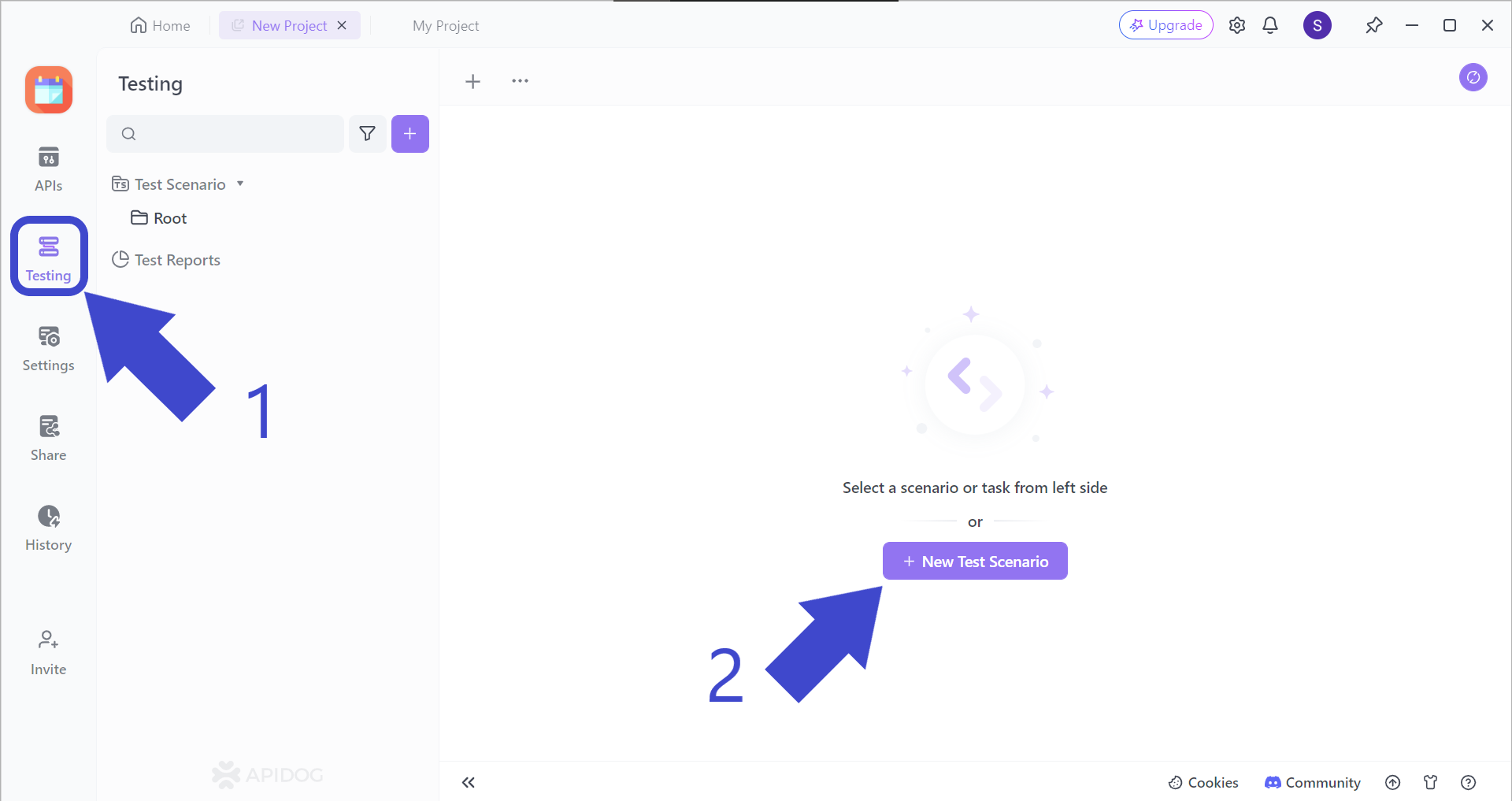
Firstly, hit the Testing button, followed by the + New Test Scenario button.
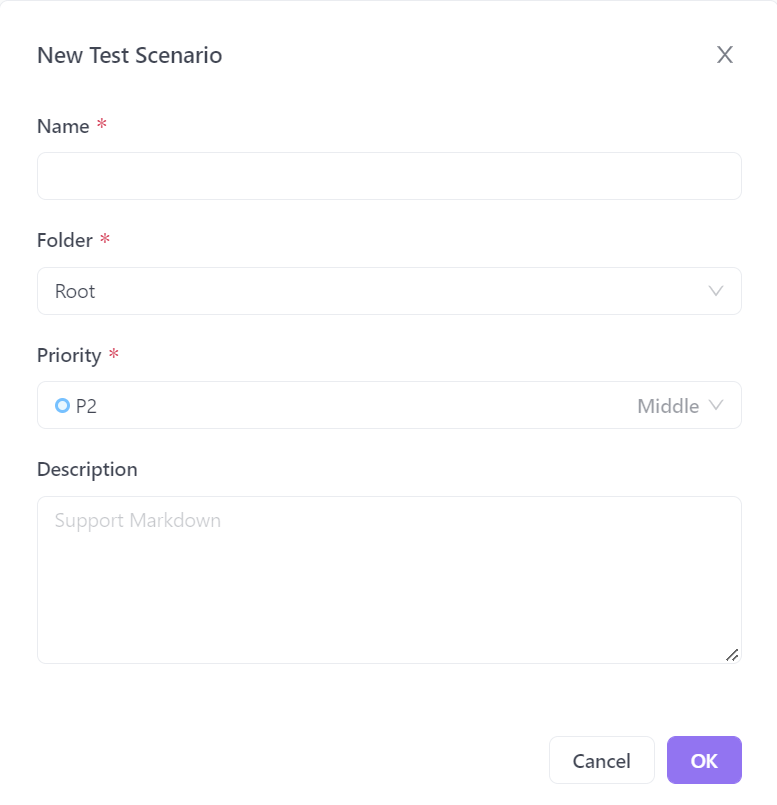
Apidog will prompt you to fill in the details for your new test scenario. Make sure to give it a proper name so its function is predictable.
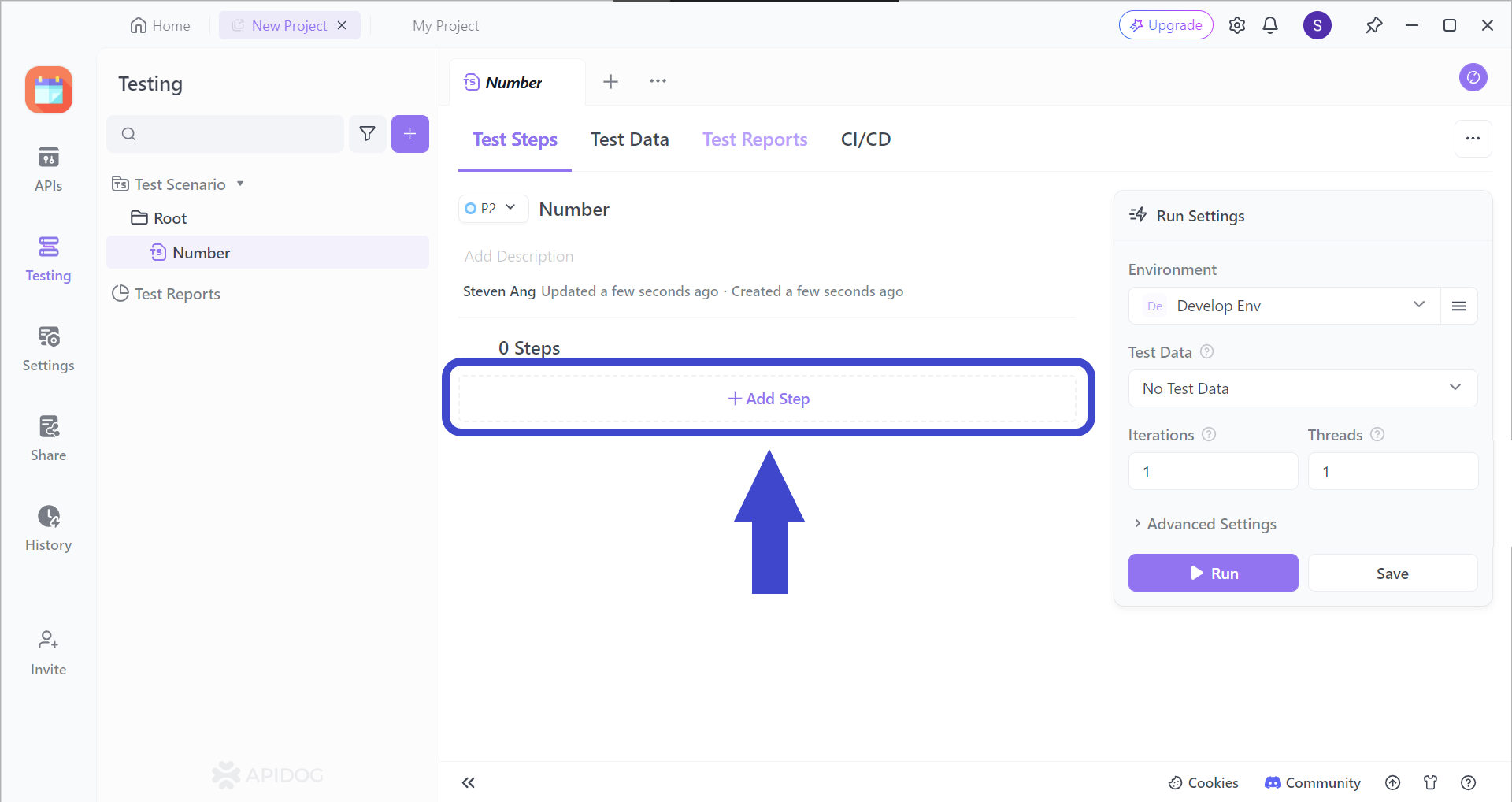
Continue by adding a step (or many more steps) to your test scenarios by clicking on the Add Step section. You should be able to see the image below.
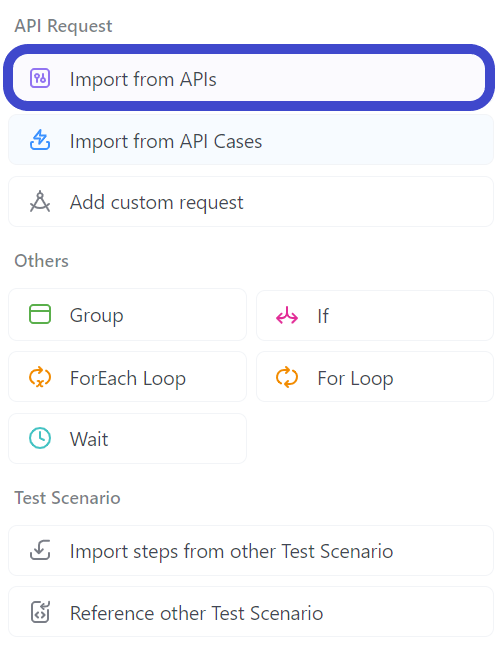
Select "Import from API" from the drop-down menu.
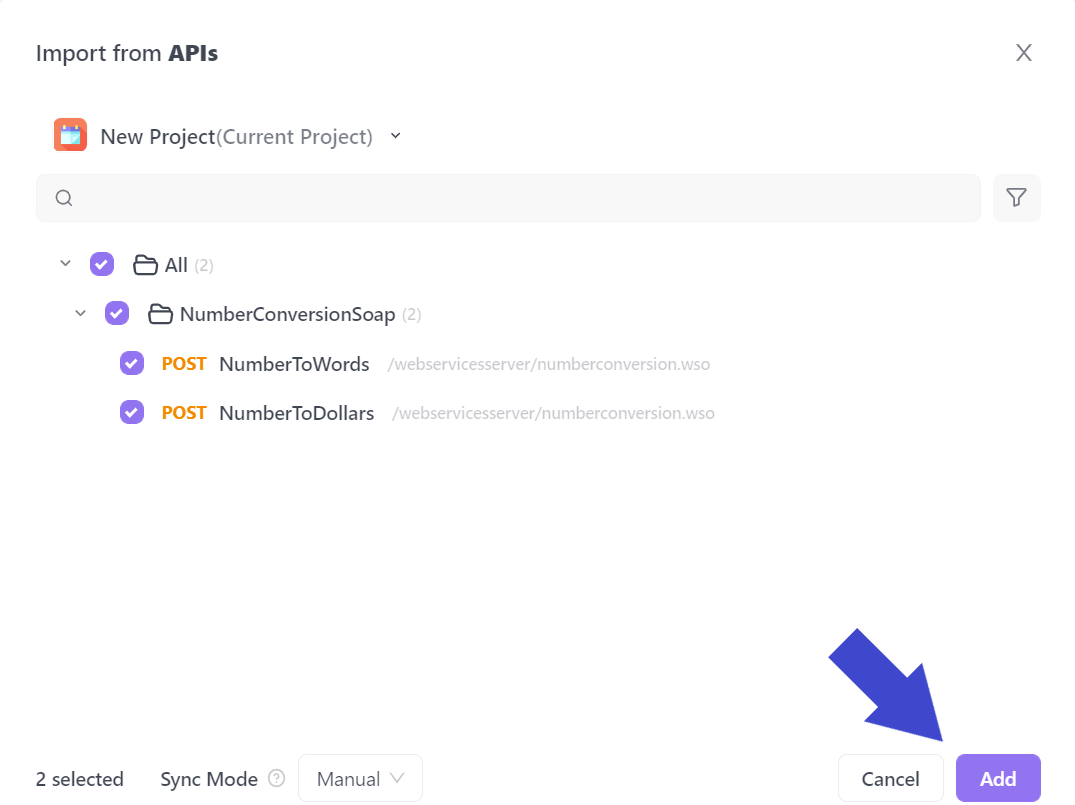
Next, select all the APIs you would like to include in your test scenario. In the example above, the API called NumberConversionSOAP has been included.
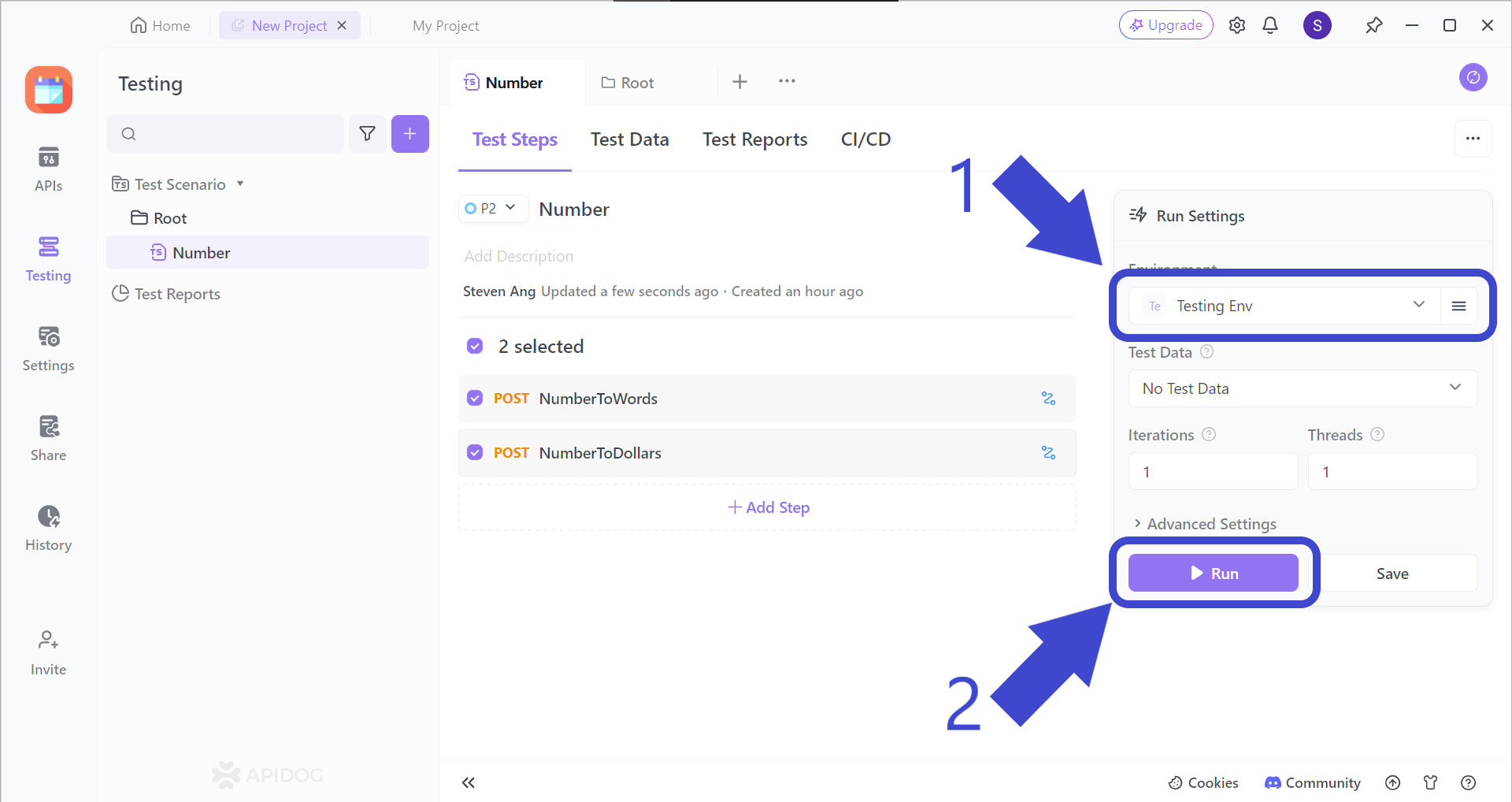
Before hitting the Run button to start your test scenario, make sure to change the test scenario environment, which should be Testing Env, as pointed out by Arrow 1.
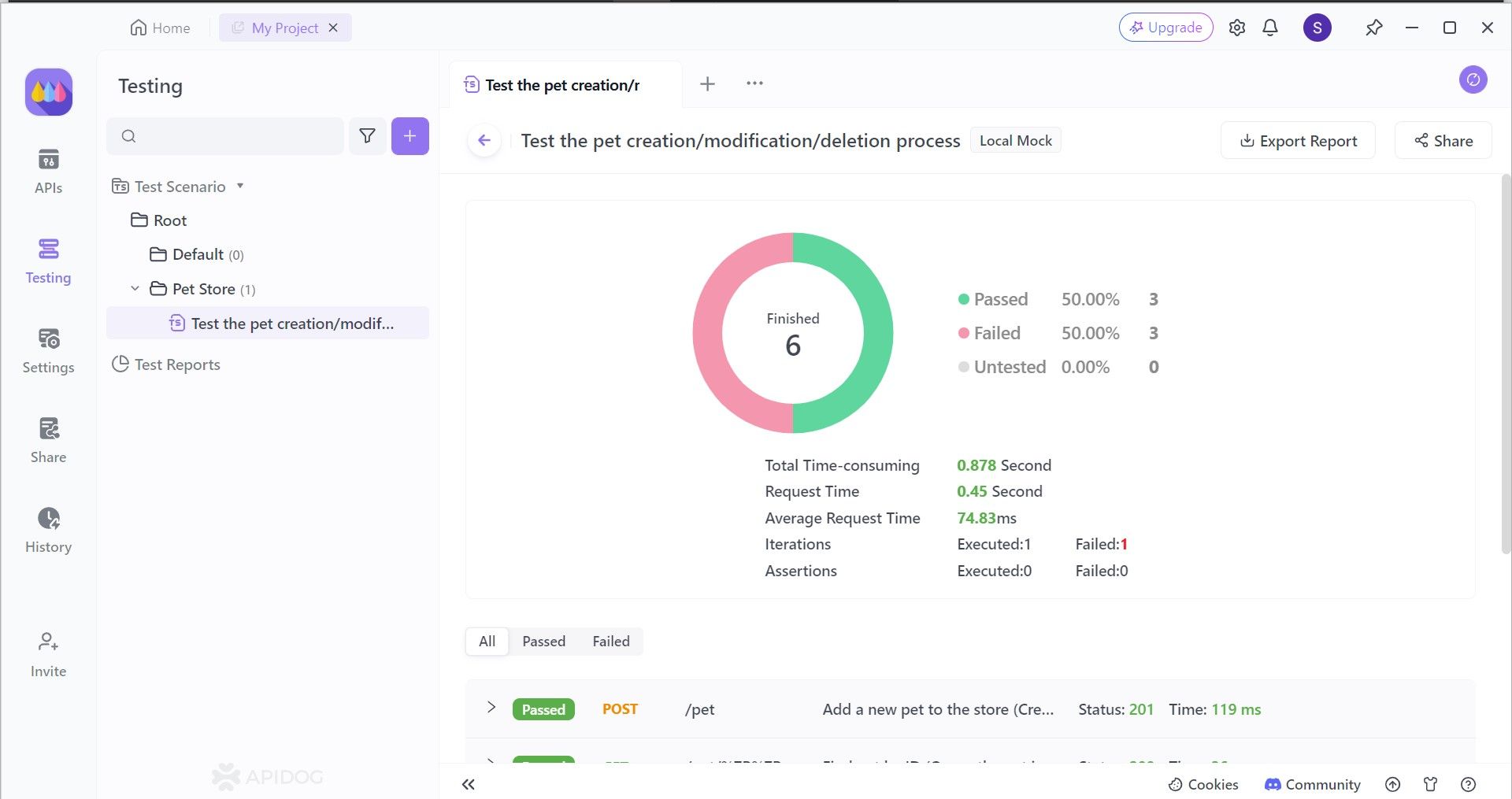
By analyzing your API's performance, you gain valuable insights into its strengths and weaknesses. This knowledge is key to making informed decisions about how to improve your API in the next development phase.
Conclusion
API request chaining offers a powerful approach to streamline interactions between your application and various APIs. By automating data flow and orchestrating requests in a specific sequence, chaining reduces development time, improves application performance, and simplifies complex workflows. Additionally, it promotes modular code design, enhances maintainability, and unlocks new functionalities by enabling the combined use of multiple APIs.
As you explore the potential of different APIs, consider how chaining can empower your applications to deliver a richer and more efficient user experience.


